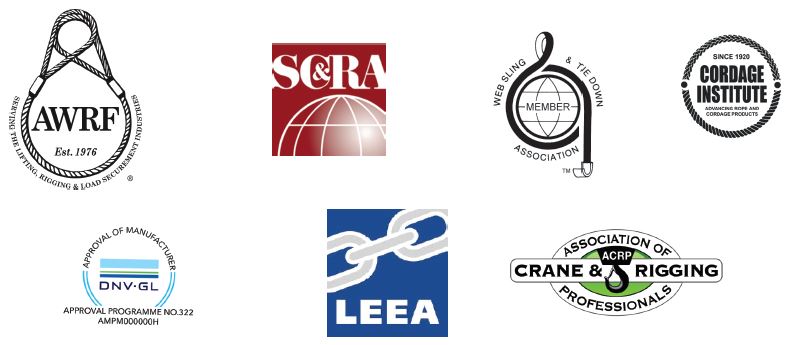CUT PROTECTION USE AND CARE


BEFORE EACH USE

1. SLING USERS SHALL BE TRAINED Do not use this pad or sleeve unless you are
properly trained.
2. Read and follow all instructions and warnings in this manual.
3. CornerMax® Pads and Sleeves are rated for 25,000 lbs per inch of sling width.
No material is cut proof. Check tag on pad or sleeve to confirm that the pad is
adequately rated for the load.
4. Inspect pads or sleeve for damage before each use including:
- Missing or unreadable identification tag
- Holes, tears, cuts, abrasive wear or snags
- Broken stitching or seams
- Acid or caustic burns
- Weld splatter or heat damage
- Any other condition, including visible damage, that causes doubt as to
the continued use of the pad

IMMEDIATELY.

NOT PROTECT THE SLING AND LEAD TO FAILURE.
INSPECTION FREQUENCIES
- All slings and rigging shall be inspected before each use.
- Documented periodic inspections of the pad or sleeve shall be completed at
least annually or more frequently depending on service.
- Refer to ASME B30.9 and / or contact manufacturer for
recommendations for guidance on service intervals.
USE
1. Select the appropriate sling and rigging. Only use CornerMax Sleeves and Pads with synthetic slings.

• Refer to manuals and instructions of selected rigging for proper use.
2. Position the pads correctly on the load.

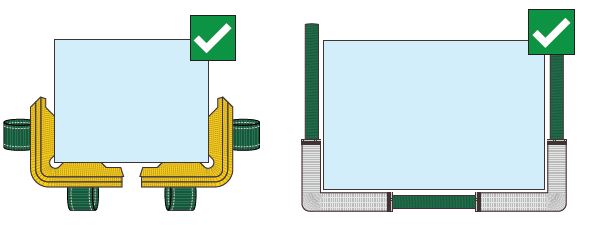
3. CornerMax Pads must be used in pairs.
4. CornerMax Pads must be used at a 90° degree angle and make full contact on both sides to create a separation between the edge of the load and the sling.
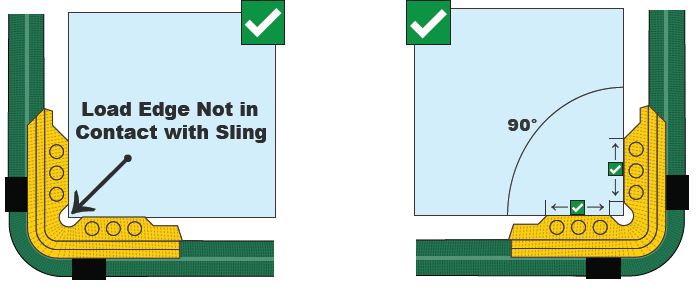


5. CornerMax Sleeves are versatile and can be used on any angled edge or surface.
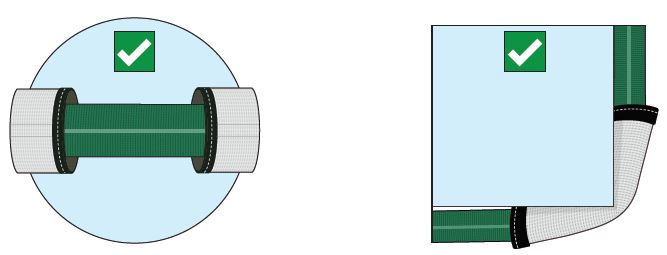





6. Apply the load carefully and slowly, ensuring the sling and pads and/or sleeves are oriented correctly. You may need to perform this several times to ensure the CornerMax Pad and Sleeve are not being damaged.





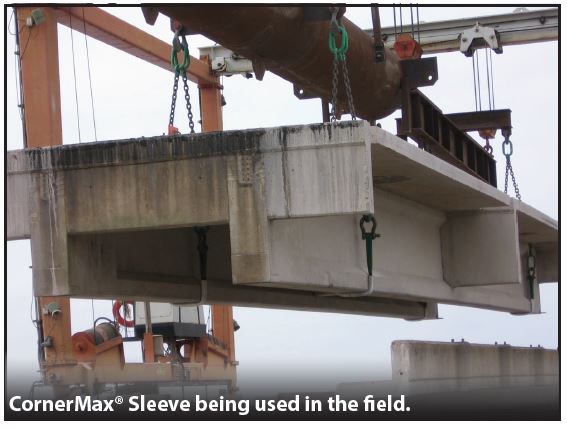
CARE
When storing CornerMax Pads and Sleeves prevent contact with possible mechanical damage, corrosion, dust, grit or extreme temperatures. To clean: use mild soap and water and allow to air dry before storing. Do not machine wash or dry, to avoid damaging the pad or sleeve.
REPAIR
CornerMax Pads and Sleeves cannot be repaired. Immediately dispose of damaged pads and sleeves.
DISPOSAL
Before disposing of CornerMax Pads and Sleeves, they shall be marked of destroyed to prevent inadvertent use. Waste shall be disposed of in accordance with national and local regulations.
TRAINING & RESOURCES
Per ASME B30.9 & OSHA Sling users shall be trained. Qualifying persons performing rigging functions shall meet the applicable criteria and shall, through education, training, experience, skill, and physical ability, as necessary, be competent and capable to perform the job. Rigging training is widely available through your local Slingmax® Dealer.
For training information please contact your local Slingmax Dealer or visit www.slingmax.com
ASSOCIATIONS
For additional information on the safe use, inspection, and training requirements, please consult the standards and reference items below:
• WSTDA-RS-1HP
• ASME B30.9
• CI 1905
• OSHA 29 CFR, 1910.184
• Slingmax Rigging Handbook
• Slingmax Smartphone App
